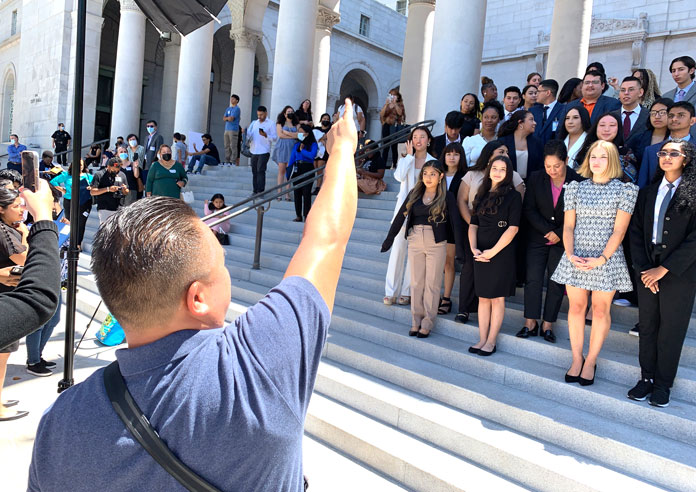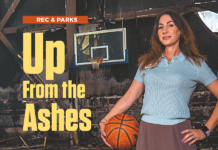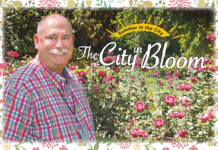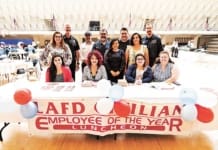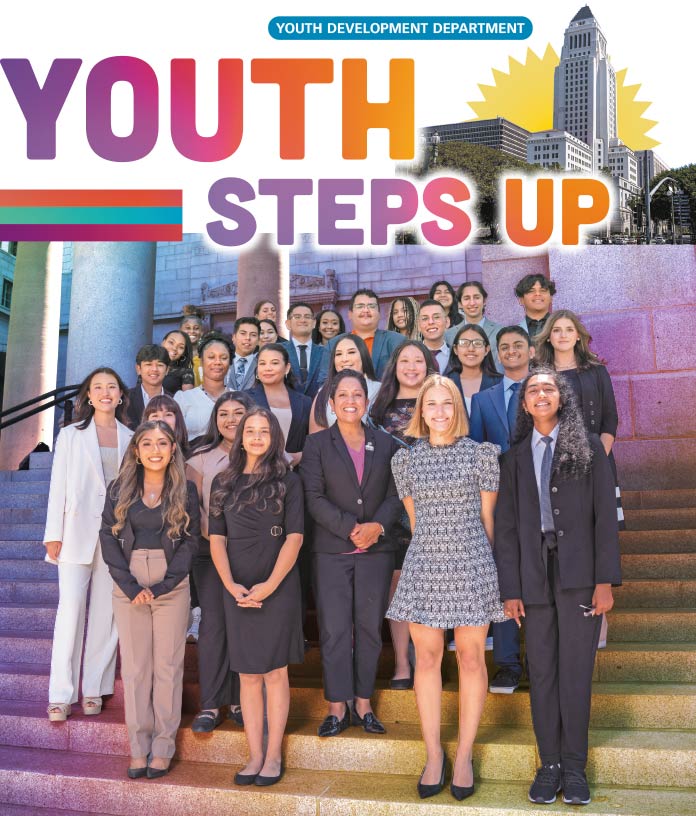
Since June 2021, City Hall has been getting a lot younger, by design.
That’s when the City Council, led by Councilwoman Monica Rodriguez, voted unanimously to create the Youth Development Dept., one of the City’s newest units.
A major, although not only, purpose of the department is to create, manage and develop the City’s first Youth Council. One year later, the Olivia E. Mitchell Youth Council was presented to the LA City Council.
This Youth Council is getting to work learning how LA City government works, how to be heard, and how to make a difference.
The mission of the Youth Development Dept. is to foster an equitable and sustainable ecosystem of positive youth development in the City through inclusive, youth-centered, and evidence-based policies and programs to ensure the wellbeing, safety and achievement of the young people of Los Angeles.

The department strives to elevate the unique experiences, abilities and voices of young Angelenos to develop and implement lasting solutions to the most pressing issues affecting their families, their communities and their futures.
Beyond the Youth Council, the department is pulling up its sleeves to centralize the City’s response to the urgent needs of young people. Currently, City services for youths are spread among 26 departments. The Youth Development Dept. is set on centralizing services for efficiency and efficacy.
LA has an estimated 800,000 citizens under the age of 20, with one-quarter estimated to be homeless or living in poverty. Additionally, many youths struggle with mental health issues, exacerbated by the pandemic. The Youth Council is focused on researching, writing and proposing programs to the Council that can help these youths in particular, and all LA youths generally.
The Council motion to create the department last year was introduced by Councilmembers Monica Rodriguez, Kevin De Leon and Nithya Raman. They wanted to create one department to focus all of its resources on young Angelenos, saying they “deserve a government structured and designed to meet their needs informed by their voice, not outdated preservation of unmeasured programs.”
This past January, the Council confirmed Lisa Salazar as the department’s first General Manager and Executive Director. Previously, Lisa was Director of Workforce Development and Economic Opportunity out of the Mayor’s Office.
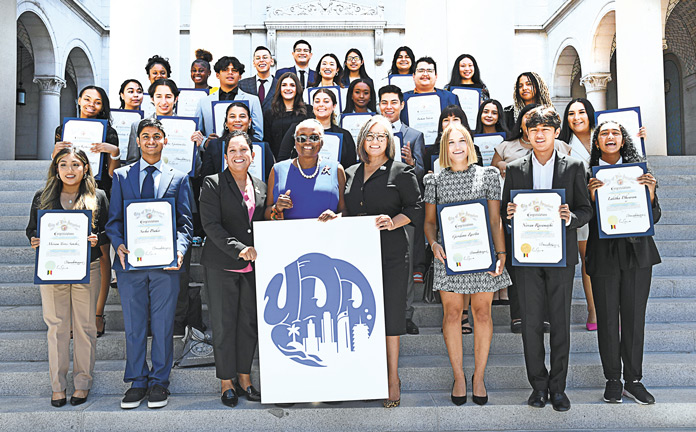
The Olivia E. Mitchell Youth Council is expected to be similar to the Youth Advisory Council established by former Mayor Tom Bradley in 1974. It’s named for Olivia E. Mitchell, who oversaw Bradley’s Youth Advisory Council.
Further, the new department has the responsibility to create a road map – the Youth Development Strategic Plan – to create vision and a forward drive over the next three years.
Department staff includes Lisa Salazar; Bindu Kannan, Director of Administration and Operations; Tamar Fowler, Community Engagement Specialist and Management Analyst; Erica Harris, Contract Administrator and Management Analyst; Aksel Palacios, Strategic Partnerships and Government Affairs; Ramon Covarrubias, Acting Executive Officer; Karen Arevalo, Community Engagement Specialist and Management Analyst; and Justine Duarte, Administrative and Training Coordinator. The department expects to grow significantly in the next few years.
Read all about this new and much-needed department in this month’s Alive! interview. Thanks to Aksel Palacios and Karen Arevalo for their assistance.

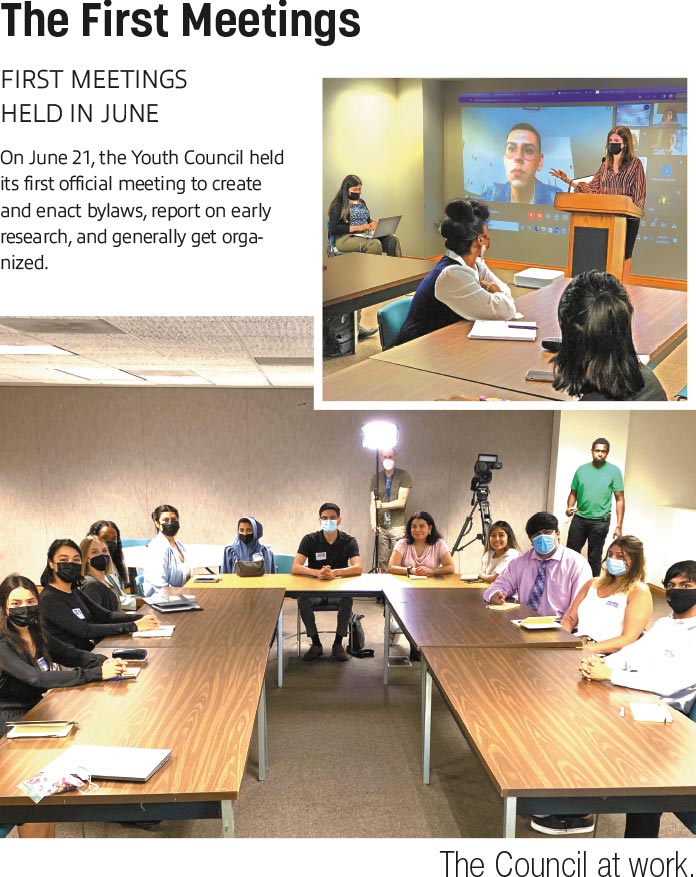


On June 13, Club CEO Robert Larios and Alive! editor John Burnes interviewed Lisa Salazar, Executive Director and General Manager, 21 years of City service, and Aksel Palacios, Director of Strategic Partnerships and Government Affairs, both of the City’s new Youth Development Dept. The department has developed and implemented the first youth council in the City’s history. Lisa and Aksel talked about this historic moment via Zoom. Both are Club Members.
Building Today for Tomorrows
Lisa Salazar: Hello, Robert! You’re a famous person to me. I’ve been receiving Alive! for many, many years.
Q: That’s wonderful! Thank you. Lisa, tell us your career path.
Lisa: My first real job was from 1985 to 1989, when I was a summer worker under the City’s Community Development Dept., and then I left for 10 years to work in the nonprofit sector. I came back to the City in 2000 under a grant through the U.S. Department of Labor for the Youth Opportunity Movement. I came back to CDD and continued to work in the Youth Employment Section. Youth employment has really been the focus of my career.
The department transitioned to the Economic and Workforce Development Dept. in 2013 where I was Acting Chief running the City’s Youth Source System that continues to operate. It’s responsible for Hire L.A.’s youths, summer jobs, and the Youth Source Centers year-round.
Then I came over to serve Mayor Eric Garcetti in 2016 as his Workforce Policy Director for five years, until he asked me to take on this role and lead this new Department of Youth Development. Throughout, my path is a story of how the City can provide a real career pathway for a young person who’s passionate about public service and gets to do something that they really love every day and get paid for it.
 One-Stop Resource
One-Stop Resource
Q: In general terms, Lisa, describe what the Youth Development Dept. is all about. What are the elements?
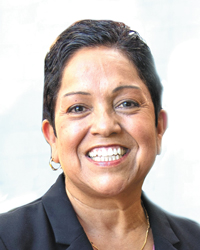
Lisa: First and foremost it’s about bringing the youth voice to City services. For far too long – and I’m guilty of it as well—we’ve designed and implemented programs without a lot of youth input, typically because the programs and services are dictated by the grantor or the funder, whether it be the federal government or the state or even of our own creation. That’s one. Two, on the heels of the Controller’s report “Room to Grow,” where he outlined the issue of having 26 different City departments providing services to young people utilizing upwards of $200 million a year – without any central coordination, a common vision, a strategic plan or common metrics to measure true impact on whether all of these services are really assisting young people and their families to be successful in education and employment. The Youth Development Dept. serves as that central point, that central coordination center, that one place where young people and their parents can come to find information about what the City has to offer, whether it be a summer job or after-school job, educational assistance, or recreation. When you look at the list of 26 departments, you understand the breadth of everything that the City has to offer.
A lot of folks don’t know about the great services that our City departments provide to young people. We don’t make it all that easy to navigate. We’re that central place where young people can come and find out. On our new Earn, Learn, Play website, young people can put in their address and find opportunities in their neighborhood that are offered by the City of Los Angeles through those different departments to either earn, learn, or play.
I mentioned the youth voice – by ordinance we will have a youth council. Aksel is lead on the Youth Council, which we recently selected and brought on board. The Olivia E. Mitchell L.A. City Youth Council is comprised of 30 young people, two representatives from each of the 15 Council districts. For 12 months, the department will work side by side with these young people to look at the various City services that we offer and provide feedback and policy recommendations to both the City Council and the mayor. Right now, the Youth Council is going through a lot of training to understand how the City functions and understand what the various departments do.
The last thing I’ll mention is the big one. Before our department, there was no strategic plan or vision. Creating that is our first order of business. We launched a strategic planning process this summer, a very public-facing, high visibility series of conversations with young people – youth-serving organizations, departments, our external partners like the school district and community college district, businesses and philanthropies to set or create a three-year roadmap for what youth development looks like in the City of Los Angeles. We’ll look at how we measure success with common metrics, and how we prioritize resources to meet young people where they’re at and help them both graduate from high school and college and be career ready.
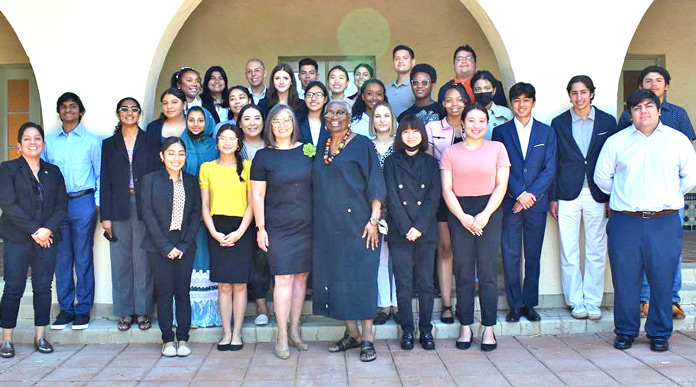
Q: That’s quite an agenda! The new department was created in 2021?
Lisa: We are coming up on our one-year anniversary July 1.
Q: How big is the department in terms of staffing? Is it growing? And what are your plans for that?
Lisa: We’re a lean and mean team of eight, including myself. I have a team of dedicated civil servants who come from a bunch of different departments like Transportation and Planning; Aksel comes from Council District 15; our other team members come from Finance. With funding from a combination of sources, including a federal grant, philanthropy and year’s budget process, by this time next year we will be a team of 23. We’ve already nearly tripled our budget in the first year. There’s a lot of support for this work. We are growing very fast. We already grew out of the space that we have allocated that we haven’t even moved into yet, so it’s exciting. We can continue to work hybrid and share space.
Q: How did it come about?
Lisa: This whole thing came about through the work of grassroots advocacy, primarily through a group called the Invested in Youth Coalition, a collaborative of 70 youth-serving organizations that represent the entire City of Los Angeles. Back as far as 2008, these groups would come to City Hall, talk with Councilmembers and let them know that the City of L.A. is one of the largest cities in the country without a dedicated department for youth development. That told us what the Controller’s report later confirmed, that there were a lot of services, but they were disjointed and not coordinated, and they didn’t necessarily meet the needs that they saw in their communities, and that there was a lack of a youth voice. From 2008, through maybe eight different Council motions from five different Councilmembers over the years and lots of studies and report-backs, it wasn’t until Councilwoman Monica Rodriguez – and we have to give her credit – became the champion of this department. Councilwoman Rodriguez helped create a Youth Development Executive Task Force, comprised of youth-serving organizations and young people. That task force met twice a month for almost a year during COVID to dig into all of the issues around youth development in the City. It also looked at external partners in the County and crafted a report of recommendations that sent to the Council. The report recommended that the City establish either a department office or a commission on youth development, where central coordination and a youth council would be incorporated. The mayor made room in the budget to get us started, and here we are about to celebrate our first anniversary.
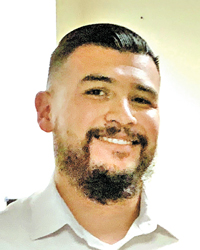
Aksel Palacios: As a City, we’re in departments. We sometimes silo ourselves, and the arm doesn’t know what the other arm is doing. So we reach out and selfishly ask other departments to be part of this process and to get involved with our department. Sometimes City employees in other departments don’t know just how much of an impact and influence they can have on the next generation. If we can inspire at least one person from another department to want to join or help in any way or be part of some of our projects, then that’s a win.
Lisa: We’re definitely going to be coming back to other departments to create opportunities for young people to intern and learn from our current workforce about what it is they do, and what advice would they have for them. The City recently secured a grant through the state of California for $53 million to create 4,000 internships for young people in the City. We have been meeting with the departments to let them know that they have an opportunity to host a young person in their department. It’s incumbent on us to work with these young people, to help create the workforce of the future for the City of Los Angeles so that we’re leaving it in good hands.
Youth Challenges and Success
Q: What kind of challenges is the department set up to solve or address?
Lisa: I like to start with our young people and their aspirations. They want to graduate from high school and college, and be career ready. They want a school that is safe. They want neighborhoods that are safe. They want streets that are clean. They want access to services when they need assistance. But there are a lot of systemic barriers to having all of those things in their neighborhoods. Our young people face challenges of homelessness and housing instability. And then employment: During COVID, young people were one of the populations that took the hardest hit on employment, and they continue to lag in recovering in that aspect. They took a huge hit around education in not going to school and being away from their peers and stuck at home all day.
The biggest challenge, in every conversation that Aksel and I have with them, is access to mental health services, not just one-on-one therapy-to-patient type of therapy, but they’re also asking for alternative forms of mental health assistance. That can be served by lot of the services that the City has to offer – recreation, art, music, sports, working, and through our Youth Source, our Family Source – and so on.
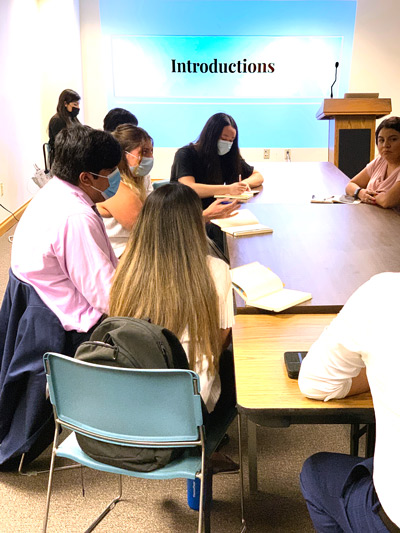
Q: It seems you serve two clients. You have the youths, of course, but you have the other City departments to help them shape their services for youths, and bringing the services all together.
Lisa: We do. And all 15 Council offices and the mayor.
Q: Right. So it goes both ways. It goes down, and it goes up, depending on how you want to look at it.
Lisa: It really does. I hope if we’re successful that we really change the narrative about young people who are facing those barriers. That’s what we’re really about. The Youth Council is comprised of 30 individuals with very high aspirations and who are very impressive young people. If we could help every young person get to that place, that would be great. That’s success.
Q: Is that what will success will look like for you?
Lisa: In this first year, success will be publishing the strategic plan, establishing a vision for youth development for the entire City, getting all City departments on board and aligned with that vision and strategic plan, and then establishing milestones and metrics that we are all striving to achieve. We want all working toward the same common goal as it relates to helping young people be successful– and continuing to grow the department because there’s just so much work to do.
We have just over 800,000 young people in the City, so that’s almost a quarter of the population. It’s a really big population. We had young people talking to the mayor just two weeks ago in the wake of the Uvalde (Texas) shooting, giving their perspective about community and school safety and gun violence prevention. What it all boils down to, really, is they’re just asking for more investment in all of the youth programs that I described before that they feel would help eliminate the violence that we see in the streets.
Challenges
Q: What challenges does the department face?
Lisa: Wow. Because there’s so much work to do, a challenge will be staying focused and staying the course with what we have outlined for ourselves to do in this first year. We get pulled in a lot of different directions because our young people face so many barriers. We might be talking to folks about building housing for homeless youths; we might be talking about creating access to mental health; we might be talking about a jobs program. The challenge really is staying focused and intentional with the work that we have outlined for ourselves. Our senior leadership team meets once a week to make sure to make sure everything that we’re doing this week or this month is contributing to the success of the goals that we have set forward.
Aksel: Like every other department in the City and everyone in the country, staffing is part of the hardest challenge. There are eight of us, and there’s enough work for 100 people, so that’s going to be one of the things that we continue to go with. But we’re tripling in size in a year, so we can’t complain too much. Always having enough people to continue doing the work and growing the work, that’s the toughest challenge we face.
Lisa: More staff!
Q: Is one of your challenges building a trust, building confidentiality with your young people?
Lisa: This exact thing came up in that discussion on gun violence. We have to earn the trust of every young person we encounter. They come with a little bit of inherent distrust of government, of their school district and school administrators. They feel that if people aren’t sharing decision-making power, that there’s something inherently to distrust about that exchange. The work and the success of the department will move at the speed of trust, not just with young people but with the City departments and with our external partners, too. Trust is a huge factor. You can’t coordinate anything if no one trusts you.

The First Youth Council
Q: Tell us about the Youth Council. Who’s on it?
Lisa: We advertised the opportunity for a month, including in Alive! We received more than 500 applications. We used a blind screening tool, so we redacted their names because we wanted to minimize implicit bias in every way that we could. We narrowed the field down to about 120. We interviewed all of them virtually, and we narrowed it down to 60 young people – 30 who were on the selected list and 30 who were on a wait list. We had various Council offices and community-based organizations participate in that interview process. We made sure that we had a good representation of young people, not only ethnically and in gender and age, but also a variety of socioeconomic backgrounds and lived experiences. Now we have this group of 30 young people, two from each Council District. It’s about a 60/40 split between high school students and college students.
Q: Got it. How long is their term?
Lisa: They’re going to serve a 12-month term. They are receiving a stipend of $300 a month for attending at least two meetings a month. They have two regularly scheduled meetings a month, and then we have additional opportunities for them to participate in other civic events outside of those two meetings, like the roundtable with the mayor. They’re going to be doing all kinds of things.
Aksel: A lot of the discussion that came up from the youth development taskforce is giving decision-making power to young people in the City. Given the structure of our municipal government, the best way to do that is to make them into a very educated, sharp and well-informed interest group/advocacy group. The best way we know to do that is taking them through a 12-month curriculum where they get to visit and learn what each department does, and to learn about the budget and legislative processes. In essence, we’re training them for 12 months with all these other extracurricular activities so they can learn how the City functions. About halfway through they select a policy issue. It could be homelessness, or it could be City services like street sweeping. They’re going to create a few committees and study it, go very deep into those issues and what the causes are, and make policy recommendations. Our hope is at the very end they’ll get a chance to sponsor some legislation with Councilmembers on the full City Council.
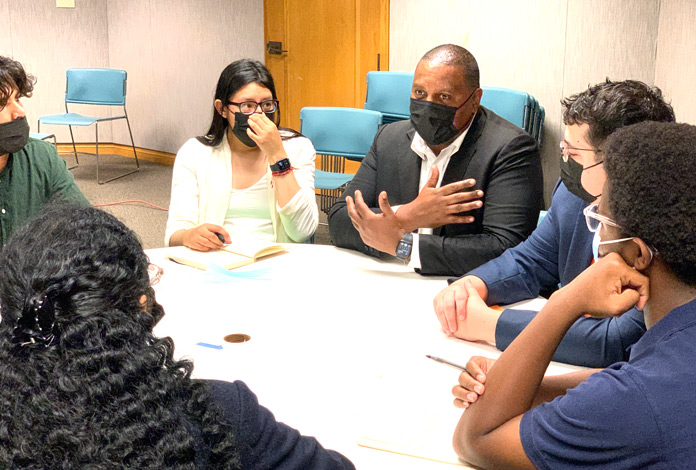
Q: What are the first steps? Bylaws, that sort of thing.
Lisa: They’re the first Youth Council, and that’s actually what they’re working on this month: Will they have officers? What would their bylaws look like? We kicked off their initial onboarding with Cal State L.A. Pat Brown Institute with some civic university training that was tailored for them.
Q: You’re giving them responsibilities.
Lisa: Oh, yes. They wouldn’t have it any other way. They’re ready to work for the City. If they’re this passionate about being involved and making the City better, what better way than to work for the City of Los Angeles and get on that career pathway?
Energy and Connection
Q: What do you love about what you do?
Lisa: I love working with young people because I get a ton of energy from them. When you work with young people it keeps you young. I’m a connector. I love meeting people. I love getting into a little bit of relationship with them, learning about what they do, what their goals are, and then connecting. I love bringing people together from various backgrounds and working toward a common goal. Being able to do that in this space with young people is really what I love about it.
Aksel: When I worked for a Council office for a few years, I got to make an effect almost immediately. Putting up a stop sign up where there are a lot of fatalities, or instrumental in fixing a pothole that’s an issue. The longer I was there, I would see that eventually that pothole would come back, or somebody would hit that stop sign and it turns into the same issue all over again. But with young people, that’s the place where you can leave the most lasting legacy, even if it’s not a tangible one. It’s an intangible legacy where it’s like you spread a lot of everything that you’ve learned throughout the generations. The greatest public service you can give is influencing that next generation of leaders, and seeing the work that you put in live on through them. That’s the most rewarding part for me.
Lisa: We have an opportunity for the Youth Development Dept. to be a national model; we are quickly becoming that in the State of California. We can be the national leader that other cities across the country look to and learn from. I’m really excited about the future and being a part of making the City even better.
Q: Big thanks to both of you for taking the time to talk to Alive! readers today.
Lisa: Thanks so much.
Aksel: Thank you so much.
|
BEHIND THE SCENE
Club VP of Marketing Summy Lam photographs the Olivia Mitchell LA Youth Council on the steps of City Hall, with family members of the Council waiting in the background. |



